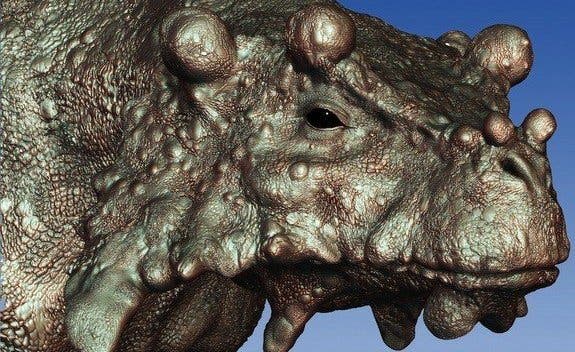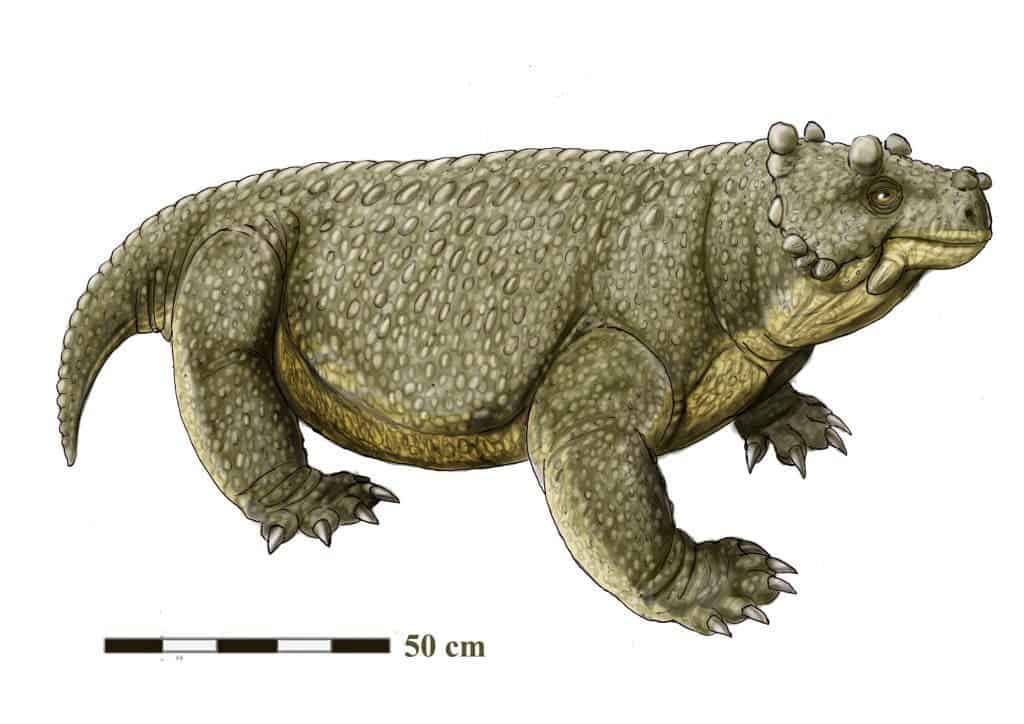About 260 million years ago, this pre-reptile might not have looked like much. With its knobby face and about as big as a cow, Bunostegos akokanensis was actually pretty remarkable. According to a new analysis, it was actually the first creature to walk upright on all four legs, maintaining a fully erect gate.
“Imagine a cow-sized, plant-eating reptile with a knobby skull and bony armor down its back,” said co-author Linda Tsuji, of the Royal Ontario Museum. She and her co-authors discovered the fossils in Niger with a team of paleontologists in 2003 and 2006.
Dogs and reptiles both have 4 legs, but they walk differently. Reptiles generally have their legs on the exterior of their body, while dogs have their legs right under them. But ironically, this posture was first developed by a pre-reptile.
“We don’t see upright posture, with the legs underneath the body, in both the forelimb and the hindlimb in a single animal until much later, in mammals and in dinosaurs,” Morgan Turner, a Ph.D. student at Brown University in Rhode Island and lead author of the study, told The Huffington Post in an email. “Bunostegos is much further back on the evolutionary tree than anything else that exhibits this posture [and] hints at a larger story about posture and locomotion evolution… The anatomy of Bunostegos is unexpected, illuminating, and tells us we still have much to learn.”

Artist’s rendering of Bunostegos, a cow-sized, plant-eating reptile that roamed the ancient central desert of Pangea more than 250 million years ago. Image credits: Marc Boulay.
Walking upright may have provided the creature with some major advantages – first of all, it would have allowed it to walk longer distances, a very useful ability in the deserts of the supercontinent Pangaea where it lived.
“Here’s this big, cow-sized animal in this very arid region,” Dr. Nick Fraser, vertebrate paleontologist at the National Museums of Scotland, who was not involved in the study, told The Huffington Post in a telephone interview. “You don’t think of big herbivores in arid regions. What was going on there? Do we really understand what the climate was?… The more we learn about this creature, the more we will learn about what appears to be an isolated environment in the center of Pangea.”
The study, which was published in the Journal of Vertebrate Paleontology, detailed an analysis of fossilized Bunostegos, including those of the shoulder, the elbow, the forelimb bone known as humerus and another forelimb bone known as the ulna. Analysis on how the bones fit together show that the animal walked upright.
“Aspects of the anatomy of the shoulder and the forelimb indicate that the humerus could not have jutted out in a ‘sprawling’ posture,” Dr. Linda Tsuji, contract assistant curator at the Royal Ontario Museum in Canada and a co-author of the study, told The Huffington Post in an email, “and in Bunostegos we see limited motion at the elbow joint, which is an indication of upright posture in other animals.”










